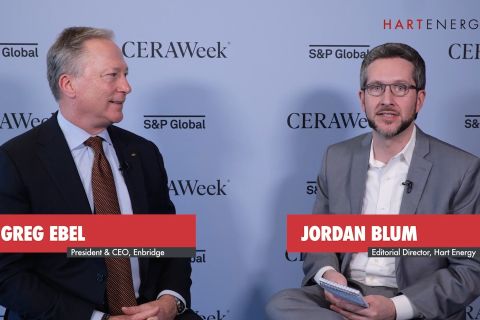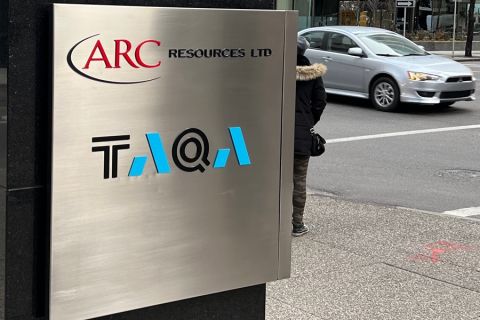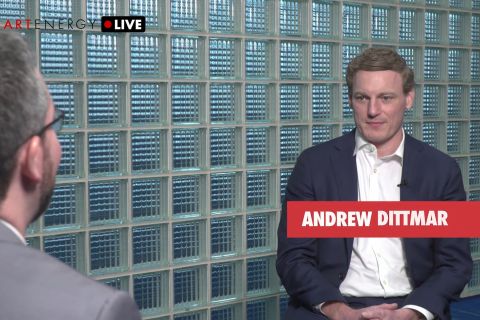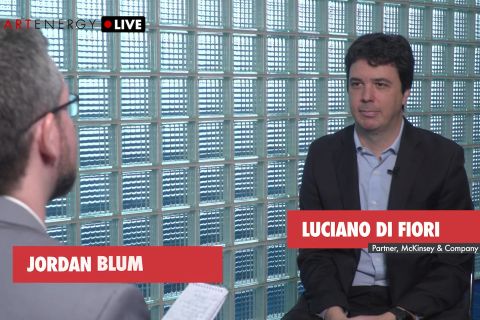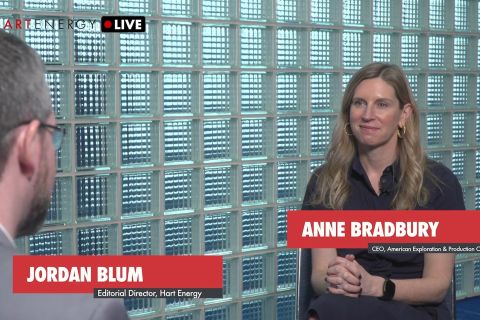
(Source: Logan Industries)
Presented by:
Editor's note: This article originally appeared in the March issue of E&P Plus.
Subscribe to the digital publication here.
Without a reliable maintenance program underpinning everyday functions, offshore operations can prove to be untenable. Only by having a solid program in place behind the scenes can operators gain the peace of mind that enables them to get on with their key priority of maximizing hydrocarbon production.
In the first quarter of 2020, a 10-year contract was signed between Logan Industries and Diamond Offshore Drilling Inc. for Logan to provide a risk reduction and continuous based monitoring program aboard four of Diamond’s vessels. Each vessel is equipped with 16 risers, with the scope of the program encompassing 64 wireline riser tensioners (WRTs) plus a small number of spares.
By entering into a maintenance program with Logan, Diamond was primarily interested in establishing increased reliability in their mission-critical WRTs, each of which serves to hold up the riser in the water column and ensures that as the vessel heaves on the ocean surface, the wellhead does not. A fair degree of compliance between the vessel, the wellhead and WRTs is required as the WRTs act as compensators. As the vessel moves, the WRTs are continuously moving, acting and heave compensating, allowing movement to occur.
Devising a proactive program
Diamond tasked Logan with devising a program that would safeguard the reliability and extend the life of its WRTs to ensure keeping the vessel working more efficiently. The following condition-based monitoring program was devised to meet this objective and to ensure that if any problems were observed, they could not be deemed a result of an error with the tensioners. The program included performing repairs and upgrades, monitoring the health of each machine periodically and placing filter carts on each machine. Risk reduction went hand in hand with delivering more predictable time frames for the operator, and an emergency response team was made available for several types of events to further reduce risk and downtime.
Cylinder upgrades
Logan harnessed its experience and knowledge in heave compensating cylinders and equipment to focus on making the WRTs more efficient through a number of upgrades to the cylinders. While performing repairs for Diamond, Logan devised several ways to modify the materials to make them more maintainable after an extended period of time exposed to saltwater in the field. Coatings were changed both inside and outside the cylinder to make them more durable and resistant to corrosion. Some of the seals were changed to make them less sticky, so they would exhibit better compensation properties in practice.
Health monitoring
Another portion of the program that was devised to help maintain reliability and consistency in the WRTs was machine health monitoring. Over the course of the 10-year contract, periodic visual health inspections will be carried out by Logan’s engineers on each vessel, with the aim of detecting damage or wear points before they progress to failure. Fluid samples will be taken and evaluated periodically. A checklist of items will be measured to gauge how the equipment is performing on each of the 64 tensioners. These regular health checks will give an impression of emerging problems that may need to be attended to quickly in the form of a repair or upgrade.
Installing filter carts
Similar to a car, if the oil in the WRTs is not kept clean, damage can begin to occur and the machine will not work with optimum efficiency. An additional aspect of the program was the installation of fluid cleaners (filter carts) to clean the fluid in each tensioner on every vessel continuously. A key aspect of this program is keeping each WRT separate from the other. Each WRT will have its own filter cart. Logan’s inspection crews will be informed of cleanliness levels through regular readouts, so fluid trends can be established and the life of the WRTs can be extended wherever possible.
Emergency response
Another important element to the program is enabling emergency response. With the program, Logan has planned for rod replacement at sea, if events call for it. Enough rolling stock of “ready spares” was made available to enable Logan to respond when needed. A team will be sent to pull a leaking rod and replace it immediately on the vessel without the need to rely on an external supplier for equipment. Similarly, a complete upper sheave assembly is held in reserve and can be replaced at sea if necessary. These types of immediate response kits will allow Logan to provide immediate action when called upon.
A set of spares will be kept on hand at Logan’s facility in Hempstead, Texas, at all times so that when a unit presents for repair and/or upgrade, the time frame required for such work can be reduced dramatically to, in most cases, less than eight weeks. By decreasing the amount of time that a machine is off the vessel while it is undergoing an upgrade, the operator is provided with a more consistent and predictable type of a repair, further reducing risk by removing another layer of potential unknowns and receiving their equipment back when they need it.
Program outlook for Diamond
The 10-year service program encompasses Diamond’s entire “black” fleet, which includes the Black Lion, Black Rhino, Black Hawk and Black Hornet. By the end of the 10-year contract, every wireline tensioner in the fleet will have been completely upgraded to a state-of-the-art level, with new seal packs, coatings, glands and filter carts. At this point, Diamond’s fleet of WRTs will be fully monitored, diagnosed and cleaned. Comprehensive logs and inspection forms will provide a baseline for every tensioner to make it clear when units need to be upgraded. Each vessel will have a Logan technician determine ranking for their tensioners, one through 16 (one indicating the most urgent attention, 16 being the least critical).
A forward-looking approach
Traditionally, drilling contractors would buy their own subsea pressure control equipment, maintain them and track them as assets in a somewhat complex process. More recently, there is a move toward drilling contractors instead renting subsea pressure control for their wellheads and transferring ownership and maintenance responsibilities to a trusted supplier. Although Diamond still owns its WRTs, it confers responsibility to partner companies like Logan for the maintenance of those machines, freeing the drilling contractors up to focus on their main concern, which is ultimately producing hydrocarbons.
The adoption of these types of innovative and comprehensive maintenance programs is not currently widespread across the industry. However, Diamond has long been an industry leader in regard to their approach to maintenance.
Essentially, the program detailed here is a way in which operators can gain more control over future eventualities in their operations that might otherwise cause them unforeseen degrees of expenditure. When a drilling contractor or operator is experiencing a period of financial squeeze, investing in a program like this is still an attractive proposition due to the reduced risk, improved reliability, increased consistency, better planning parameters and fewer variables that can be delivered to the client. The program should not be seen as a luxury addition but something to be invested in when a company wants to gain a tighter hold on expenditures going forward.
Conclusion
Active engagement with clients to clarify the bigger picture of their machine maintenance program will help to balance their short-term budgets with long-term goals. This type of risk reduction and continuous based monitoring program is of particular value to many drilling contractors and operators because it enables them to reduce the risk in their offshore operations. By adopting this type of approach, operators can stop being reactive and become more proactive. Future failures can be predicted and planned for by taking baseline measurements and continually logging and monitoring to track trends and react quickly with a rolling stock of spare parts on hand.
Recommended Reading
Exclusive: Renewables Won't Promise Affordable Security without NatGas
2024-03-25 - Greg Ebel, president and CEO of midstream company Enbridge, says renewables needs backing from natural gas to create a "nice foundation" for affordable and sustainable industrial growth, in this Hart Energy Exclusive interview.
ARC Resources Adds Ex-Chevron Gas Chief to Board, Tallies Divestments
2024-02-11 - Montney Shale producer ARC Resources aims to sign up to 25% of its 1.38 Bcf/d of gas output to long-term LNG contracts for higher-priced sales overseas.
Exclusive: Andrew Dittmar Expects Increased Public M&A in 2024
2024-02-15 - In this Hart Energy LIVE Exclusive, Andrew Dittmar, Enverus Intelligence's senior vice president, compares 2023 consolidation to what he expects in 2024, including more public to public deals.
Exclusive: Despite Uncertainty, NatGas Balances Out
2024-03-04 - McKinsey and Co.'s Luciano Di Fiori says the natural gas market is capable of balancing itself out—despite LNG permit approval pauses, midstream constraints and dependence on oil production—in this Hart Energy LIVE Exclusive interview with Editorial Director Jordan Blum.
Exclusive: Activists Sending 'Wrong Signal' on US LNG
2024-02-23 - Anne Bradbury, the CEO of the American Exploration & Production Council, says the Biden administration's pause on U.S. LNG export approvals sends a wrong message about the importance of LNG to the American economy and the climate, in this Hart Energy LIVE Exclusive interview.


